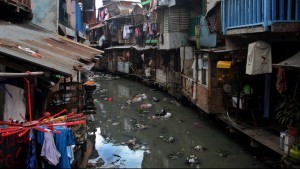Poverty has Decreased by 0.25 Million People in September 2016: BPS
 According to the National Statistics Agency (BPS), the number of Indonesian population living below the poverty line per September 2016 was 27.76 million (10.70 percent), or decreased by 0.25 million compared to the result in March 2016 which was 28.01 million (10.86 percent).
According to the National Statistics Agency (BPS), the number of Indonesian population living below the poverty line per September 2016 was 27.76 million (10.70 percent), or decreased by 0.25 million compared to the result in March 2016 which was 28.01 million (10.86 percent).
Head of BPS Suhariyanto in a press statement said that the percentage of people living below the poverty line in urban area in March 2016 was 7.79 percent, and the number decreased to 7.73 percent in September 2016. Moreover, the percentage of people living below the poverty line in rural area also decreased from 14.11 percent in March 2016 to 13.96 percent in September 2016, Suhariyanto said on Tuesday (3/1) at the National Statistics Agency Office.
Despite the decrease in March-September 2016 period, the number of people living below the poverty line in urban area increased by 0.15 million people (from 10.34 million people in March 2016 to 10.49 million people in September 2016), while the number in rural area decreased by 0.39 million people (from 17.67 million people in March 2016 to 17.28 million people in September 2016).
Suhariyanto stated that food commodities play a greater role to the Poverty Line than non-food commodities (housing, clothing, education, and health). The contribution of Food Poverty Line on Poverty Line in September 2016 amounted to 73.19 percent. It did not change much from the previous result in March 2016 which was 73.50 percent, Suhariyanto explained.
Several food commodities considerable influence on the Poverty Line in urban and rural areas are, among others, rice, filter cigarettes, meat, eggs, sugar, instant noodles, shallot, and tempeh. Meat becomes one of those commodities because September 2016 period coincided with the celebration of Eid al-Adha. Meanwhile, non-food commodities considered as the most influential on Poverty Line are housing cost, electricity, fuel, and education. (Humas BPS/ES) (RAS/MMB/LW/Naster)








